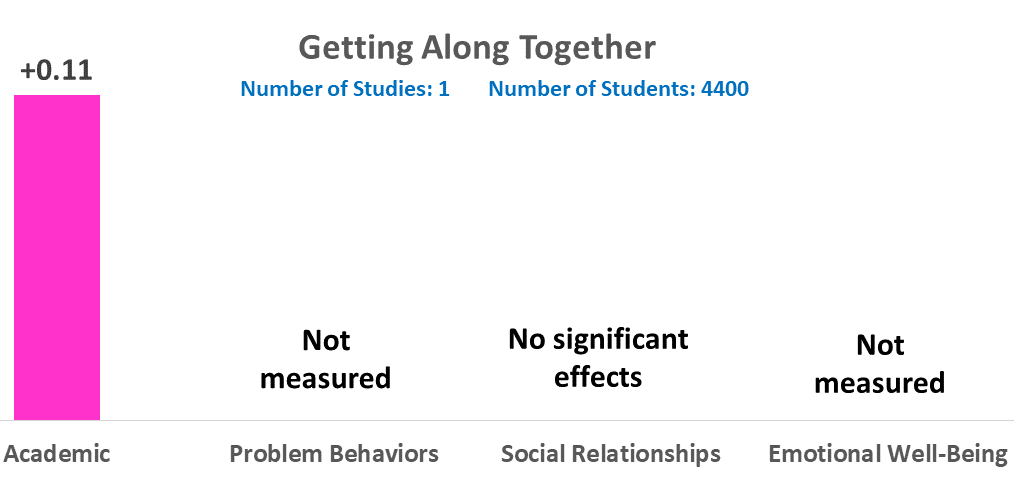
Program Description
Getting Along Together, or GAT, is a schoolwide intervention for grades K-3, designed to enhance students’ social, emotional, and self-regulation skills. Getting Along Together was originally designed as a component of the Success for All whole-school reform model, but it is now also disseminated as a stand-alone program. Enhancements to GAT were researched and evaluated by Jacob, Jones, & Morrison (2013) under the name SECURe, for Social, Emotional, and Cognitive Understanding and Regulation in education. GAT provides weekly lessons that focus on skills such as feeling identification and communication, cooperative learning, win-win conflict resolution, self-regulation of attention to enhance learning, and frustration management. Strategies for effective social relationships and coping skills are presented using characters, stories, and videos to provide engaging and memorable models of desired skills for students. For example, a penguin, Chilly, has serious problems controlling his anger when things go wrong, and learns how to give himself a “Chilly Hug” and count to five when he is about to lose his composure. The children then learn how to recognize when they are frustrated and angry, and learn to give themselves “Chilly Hugs.” Animal characters learn to solve interpersonal problems, and lessons for students are built around discussions about how the animals can learn to manage their own behavior. GAT also has a strong emphasis on cooperative learning, and develops schoolwide structures such as a “Peace Path” to set expectation for a positive school climate and conflict resolution. Teachers receive 1 ½ days of training each year and are visited by coaches who give them feedback and new ideas.
Program Outcomes
Getting Along Together has been evaluated under the SECURe title by Jacob, Jones, & Morrison (2013). In this study, six Success for All schools not using GAT/SECURe in Phoenix, Arizona, were randomly assigned to use GAT or to continue with their usual activities. Students were individually assessed on social, emotional, and self-regulation skills by testers unaware of each school’s assignment. A total of approximately 1100 students were assessed on social skills measures, and 4400 for academic outcomes in grades K-3. 71% of students were Hispanic, and 51% were English learners. 92% qualified for free lunch. Effect sizes favored GAT on literacy growth (ES=+0.08) and attention measures (ES=+0.13). The academic performance and engagement outcomes qualified GAT for a “Promising” evidence rating for the Academic category.
Staffing Requirements
No additional staff are needed
Professional Development/Training
1.5 days of PD per year
Technology
None required
Evidence Summary
Academic: Promising
